-
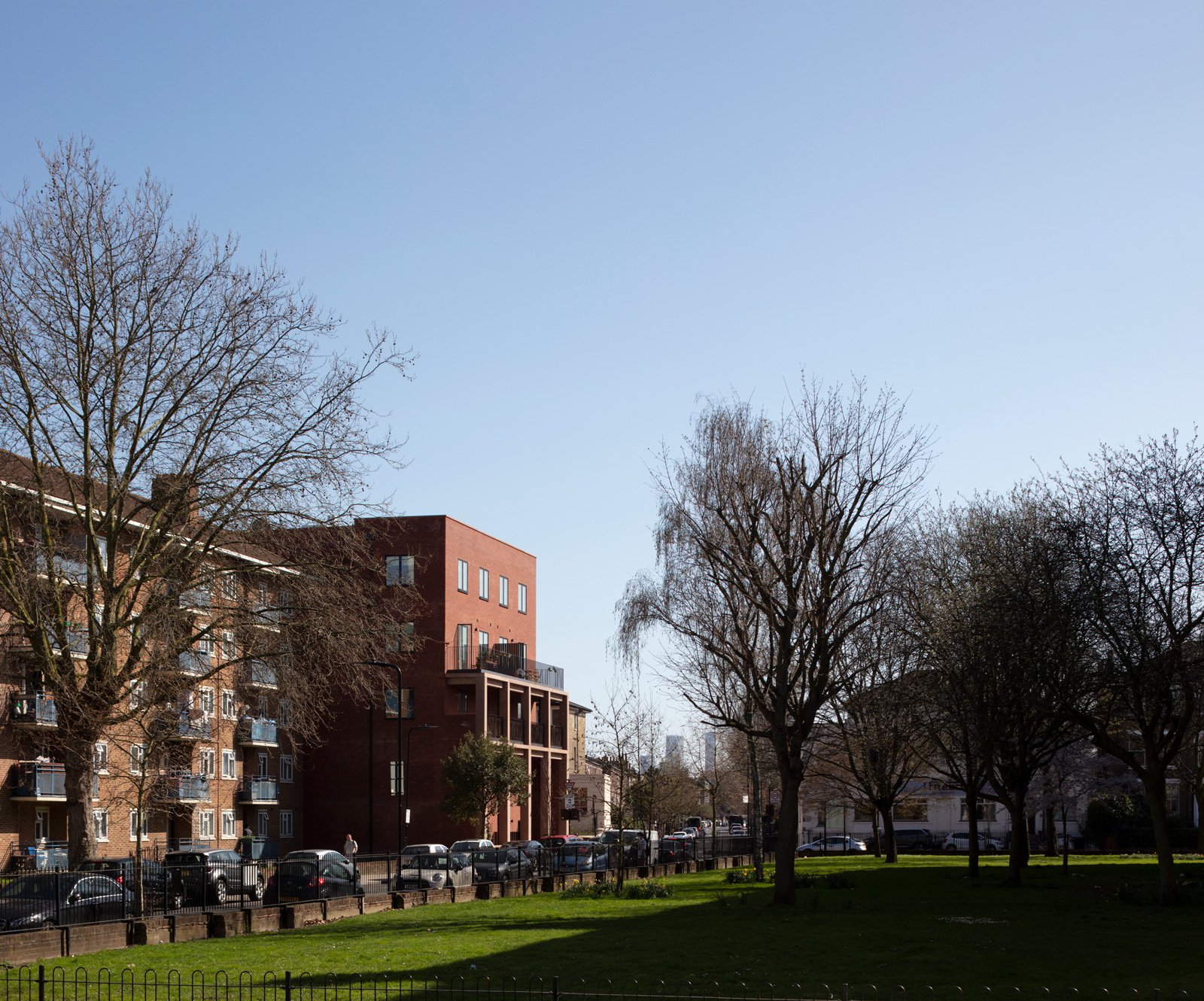
Taylor Court, west facing loggia – The grouping and massing of the new housing blocks negotiate between the contrasting urban conditions of the post-war estate and the Victorian street, repairing the urban fabric in a way that extends the public realm
-
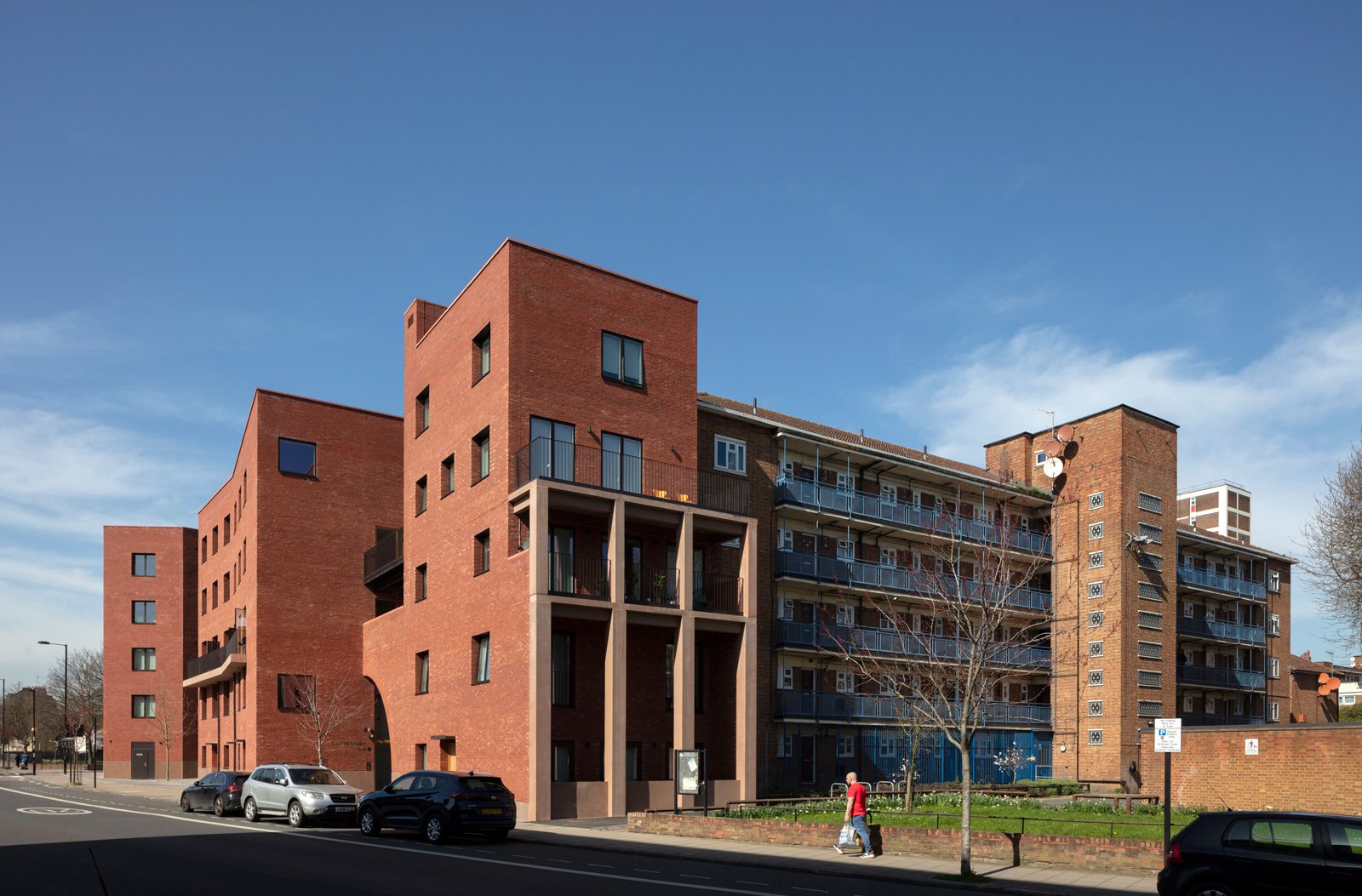
Chatto Court (foreground) & Taylor Court (background) – Five-storey buildings with street-level townhouses on the two lower floors, with the upper storeys housing lateral apartments on the piano nobile and duplex maisonettes above
-
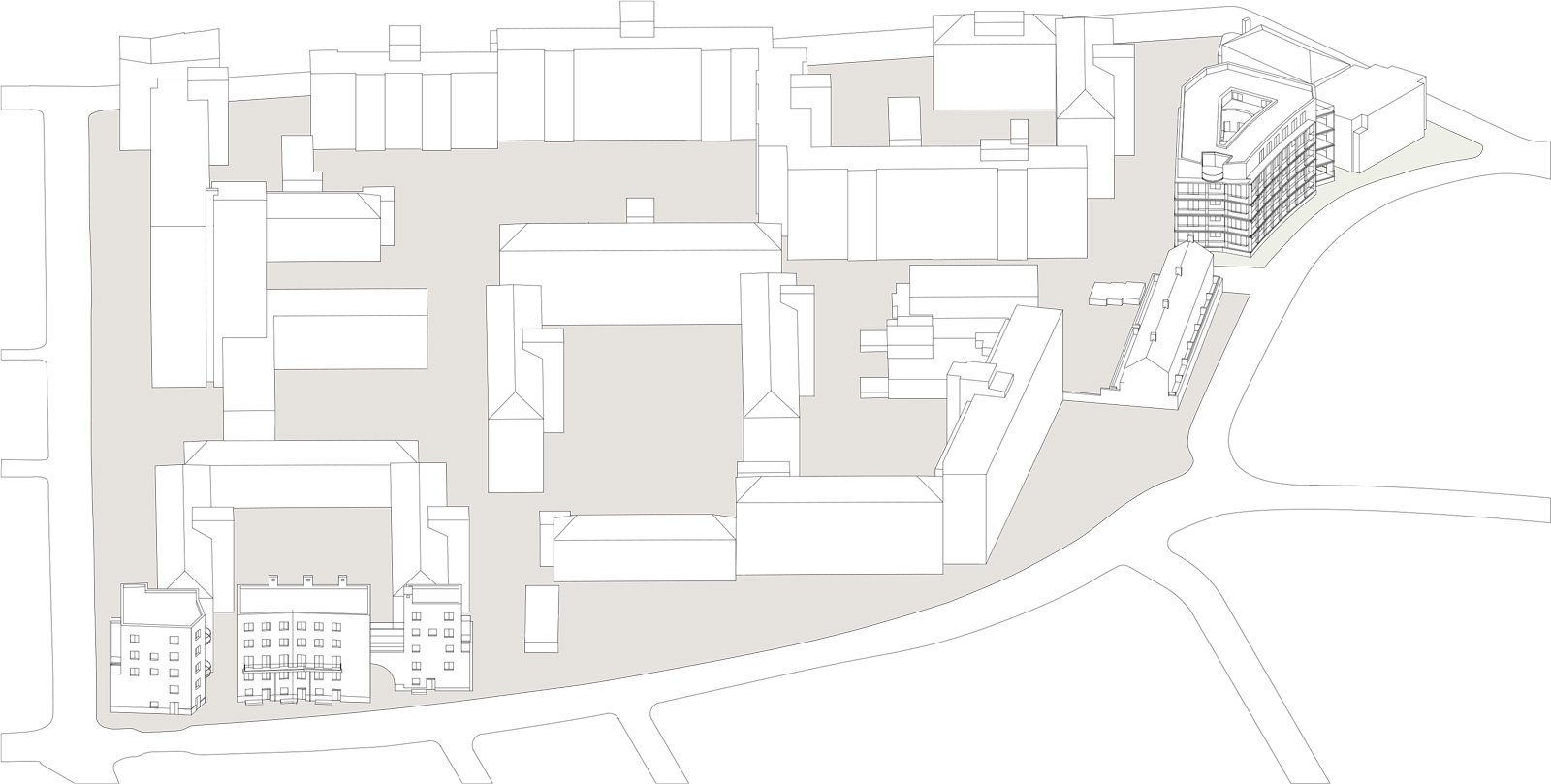
Frampton Park Estate, planometric – Located some 300m apart along Well Street from Wilmott Court, Taylor Court and Chatto Court rise from the empty site of the previously demolished Frampton Arms pub
-
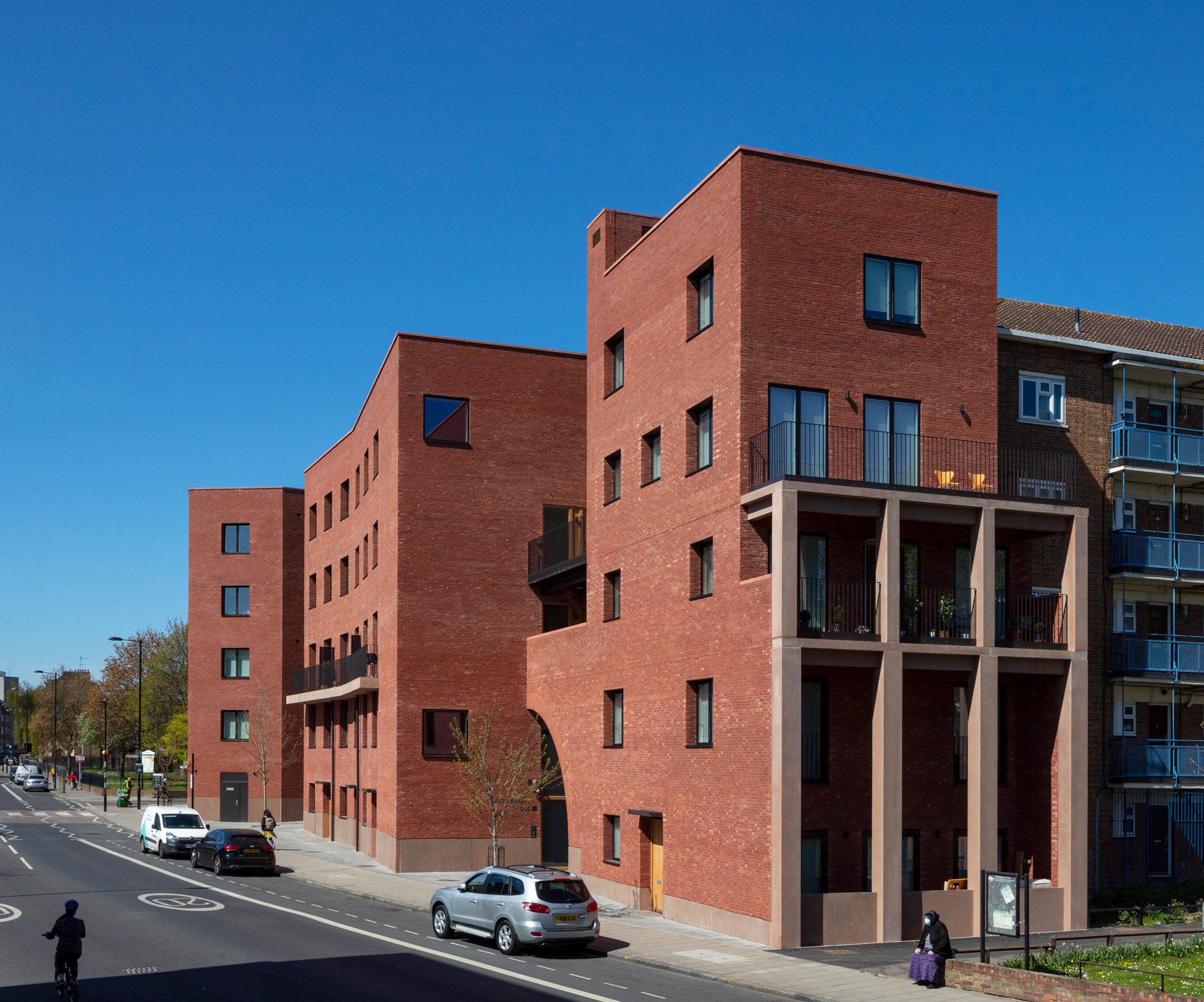
Chatto Court (foreground), Taylor Court (background)
-
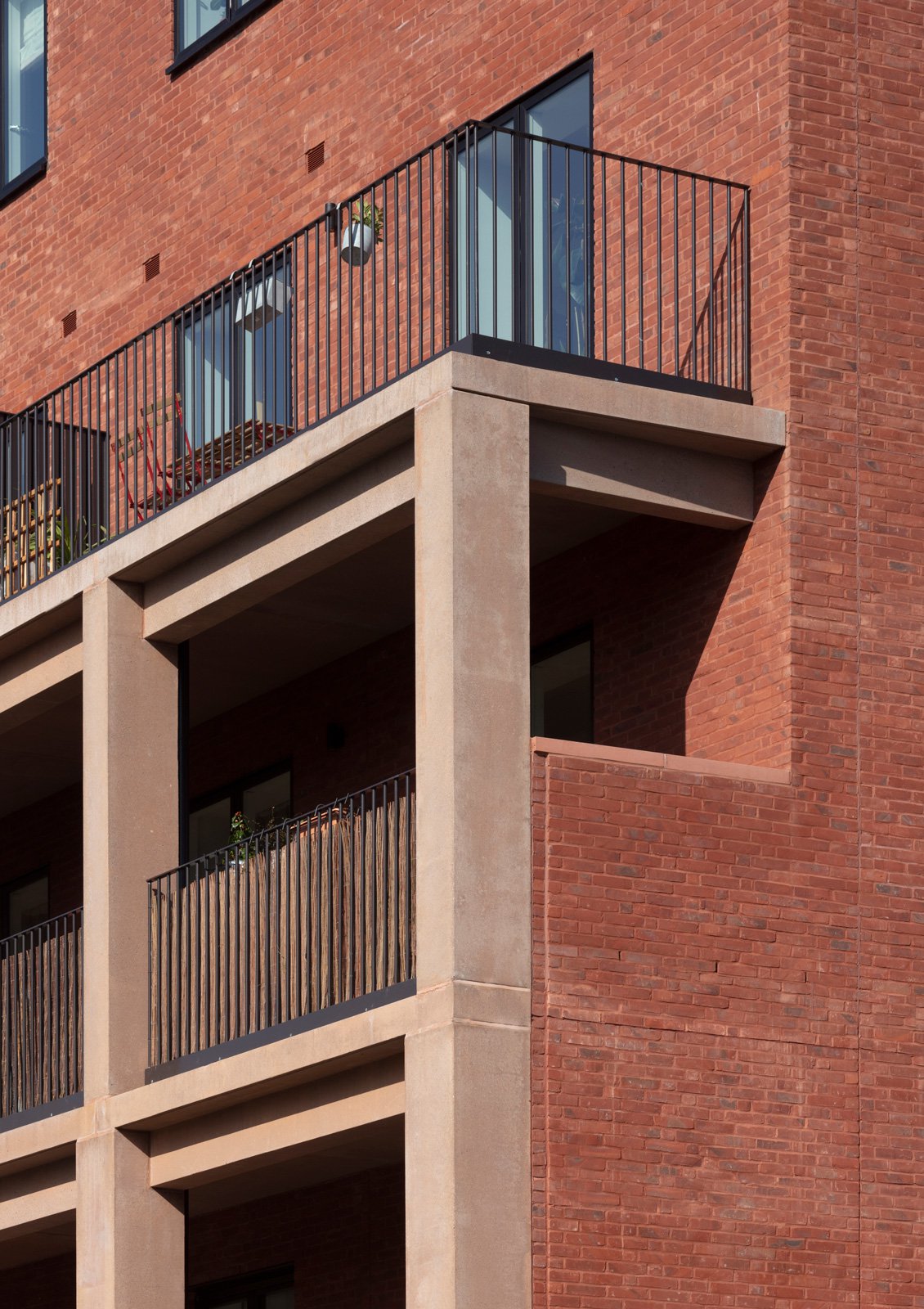
Taylor Court, loggia – Loggias are composed of precast concrete columns and balcony units, which in turn support brick walls and create open-air circulation and generous balconies for residents
-

Taylor Court & Chatto Court, planometric – The layered wall also creates a buffer between the private domain of the home and the public one of the Borough
-
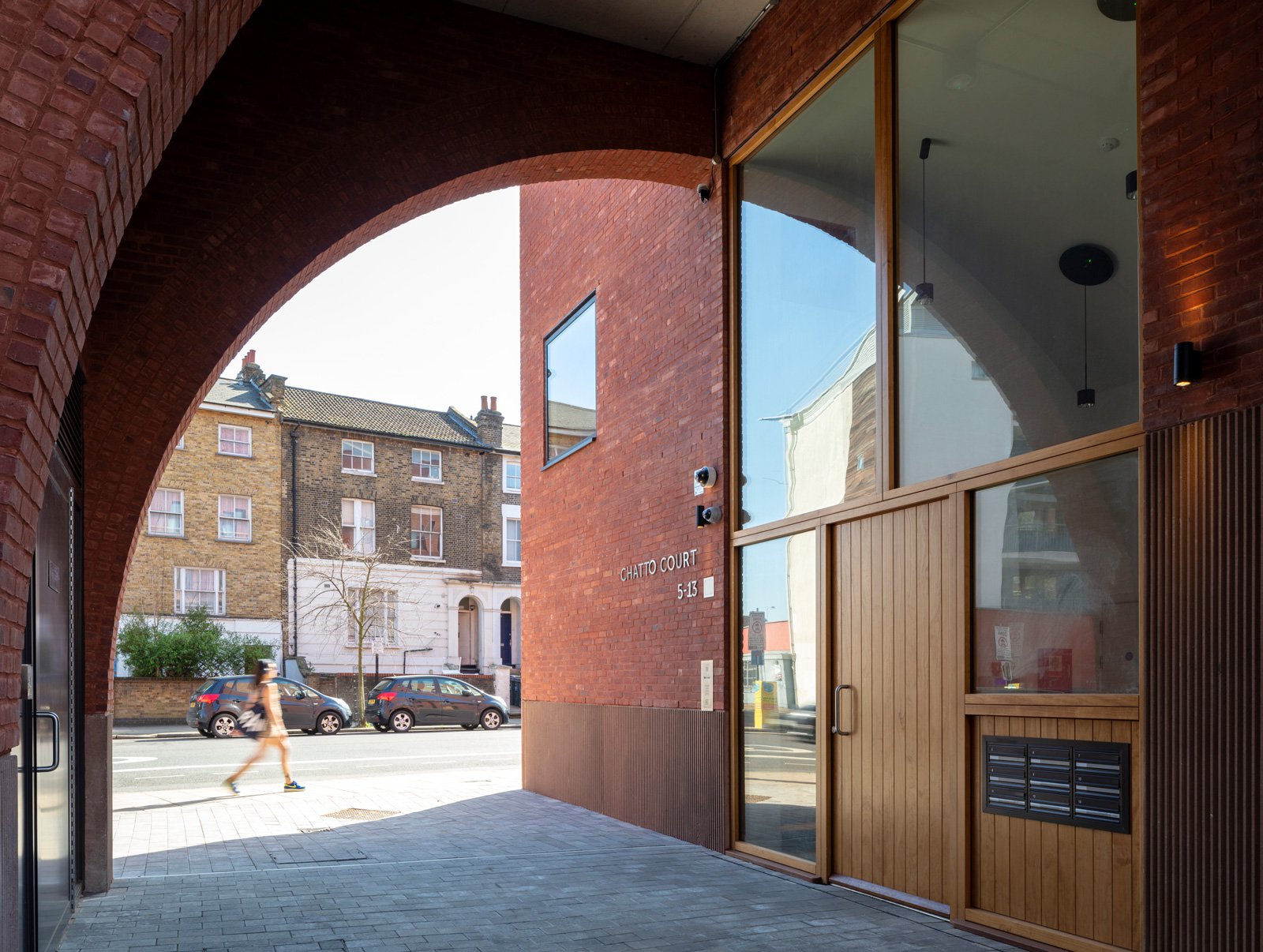
Entrance under the arch, Chatto Court – A civic quality is present in the art historical play in the buildings which finds a distinctly picturesque expression at the former Frampton Arms site with the arched bridge connecting Chatto Court’s two apartment blocks
-
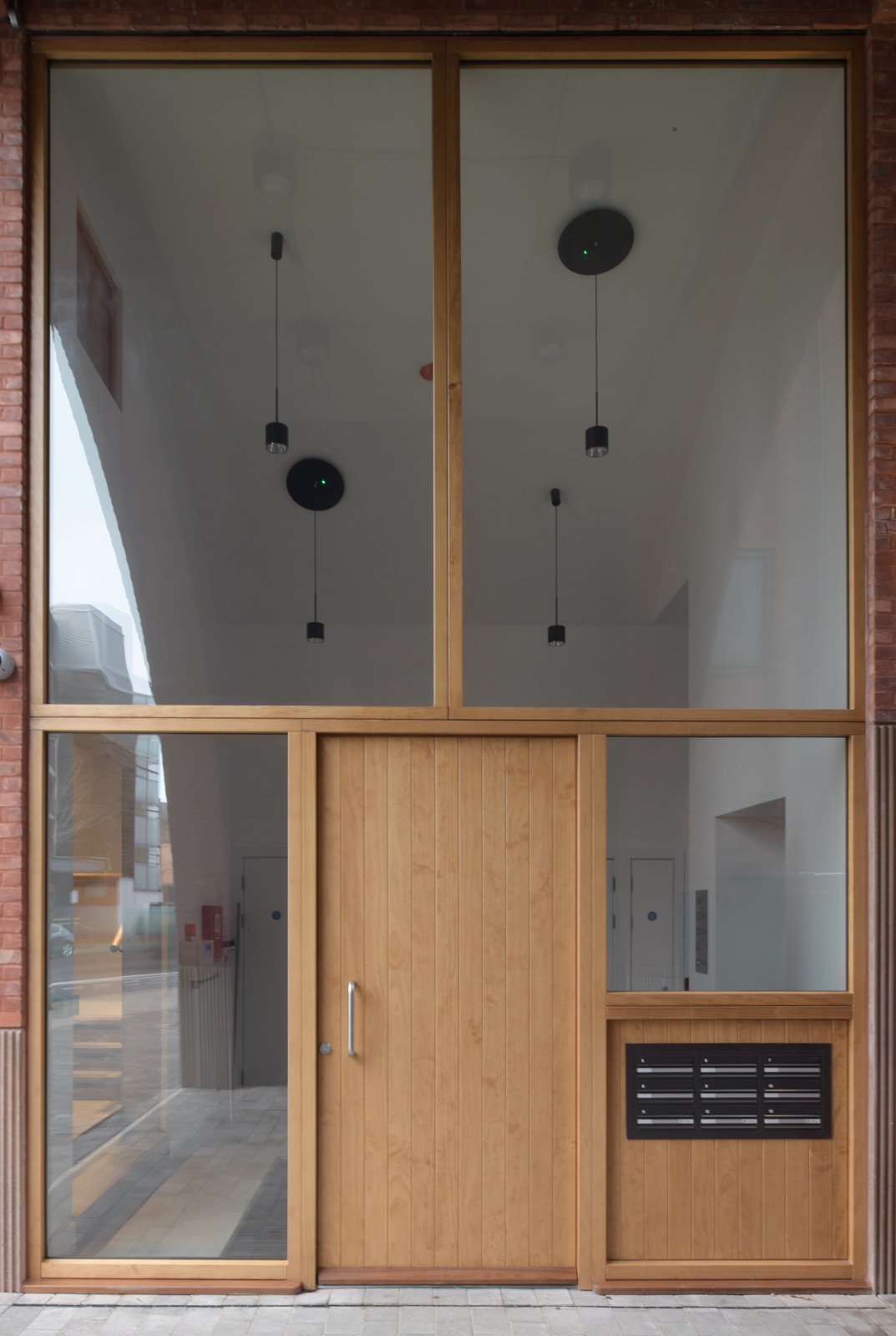
Entrance to Chatto Court – Communal entrances with generously scaled doors detailed in solid Accoya
-
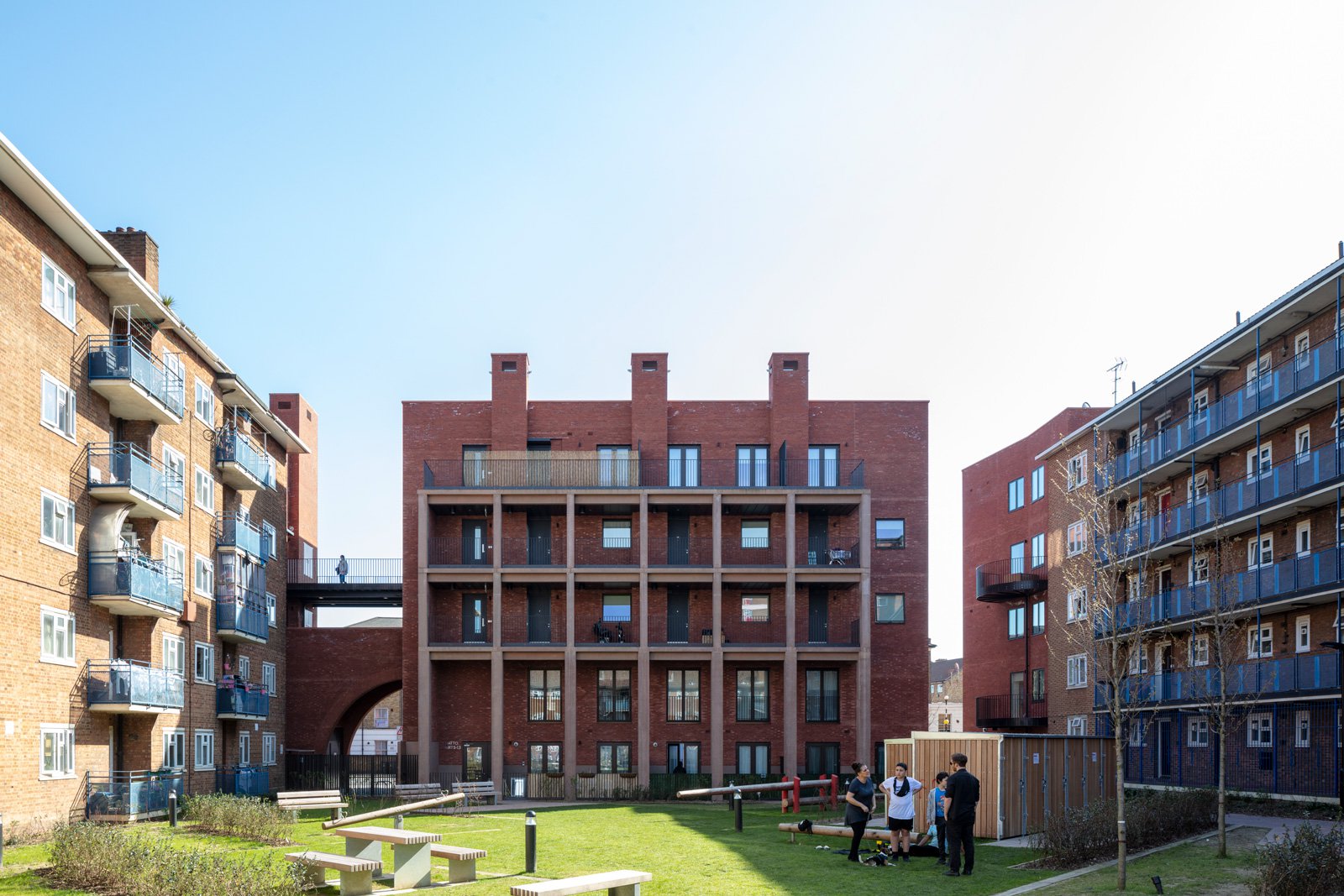
Chatto Court – Each building occupies its respective site with generous external public space interwoven along the street and within the estate.
-
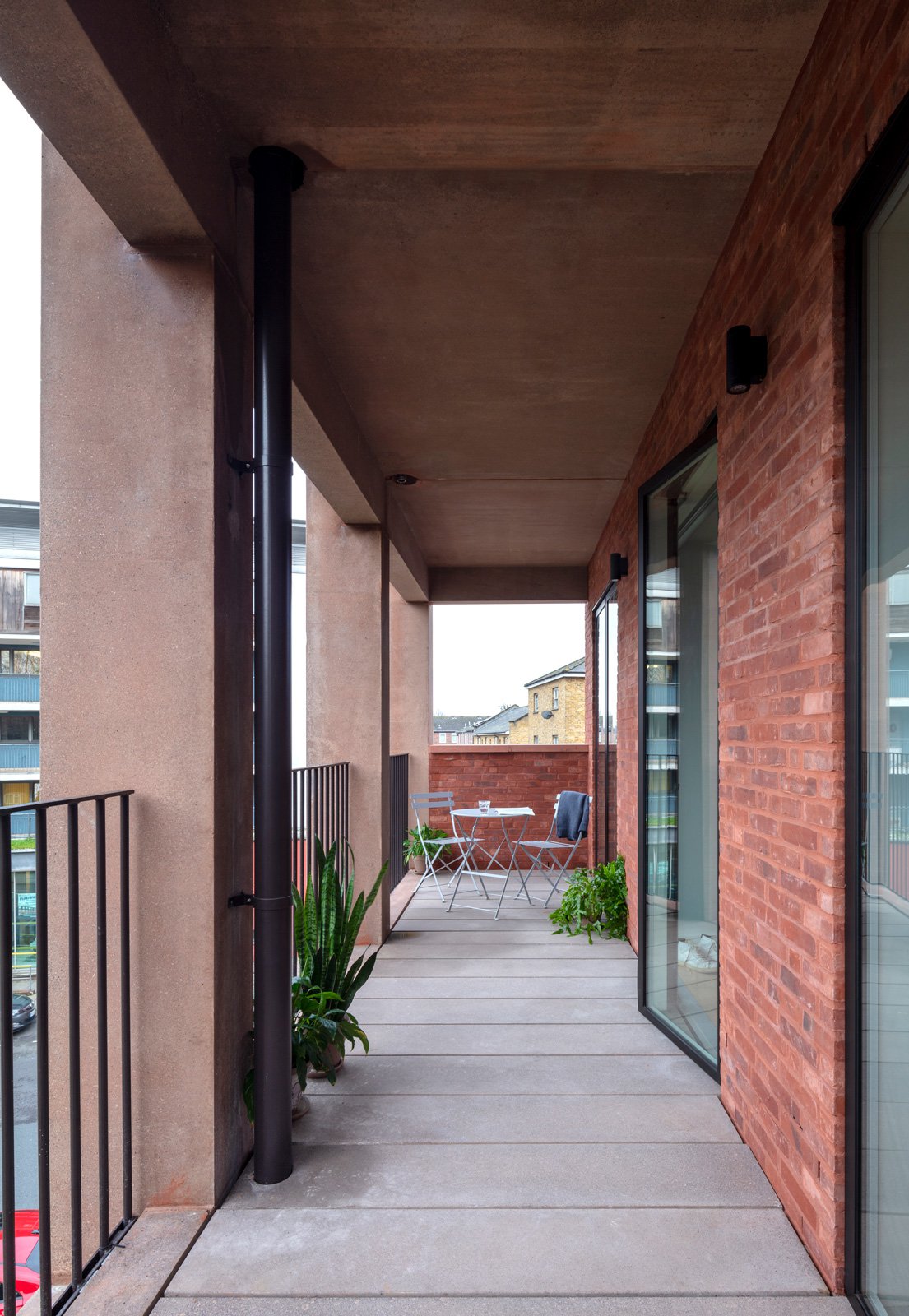
Taylor Court, loggia – Outdoor amenity space became the inspiration for an architecture at the threshold between domestic interior and urban landscape
-

Taylor Court & Chatto Court, south elevation – The frames are orientated to fragments of lawn, binding the inhabitants with the unlikely parkland that separates the archipelago of buildings on the estate
-
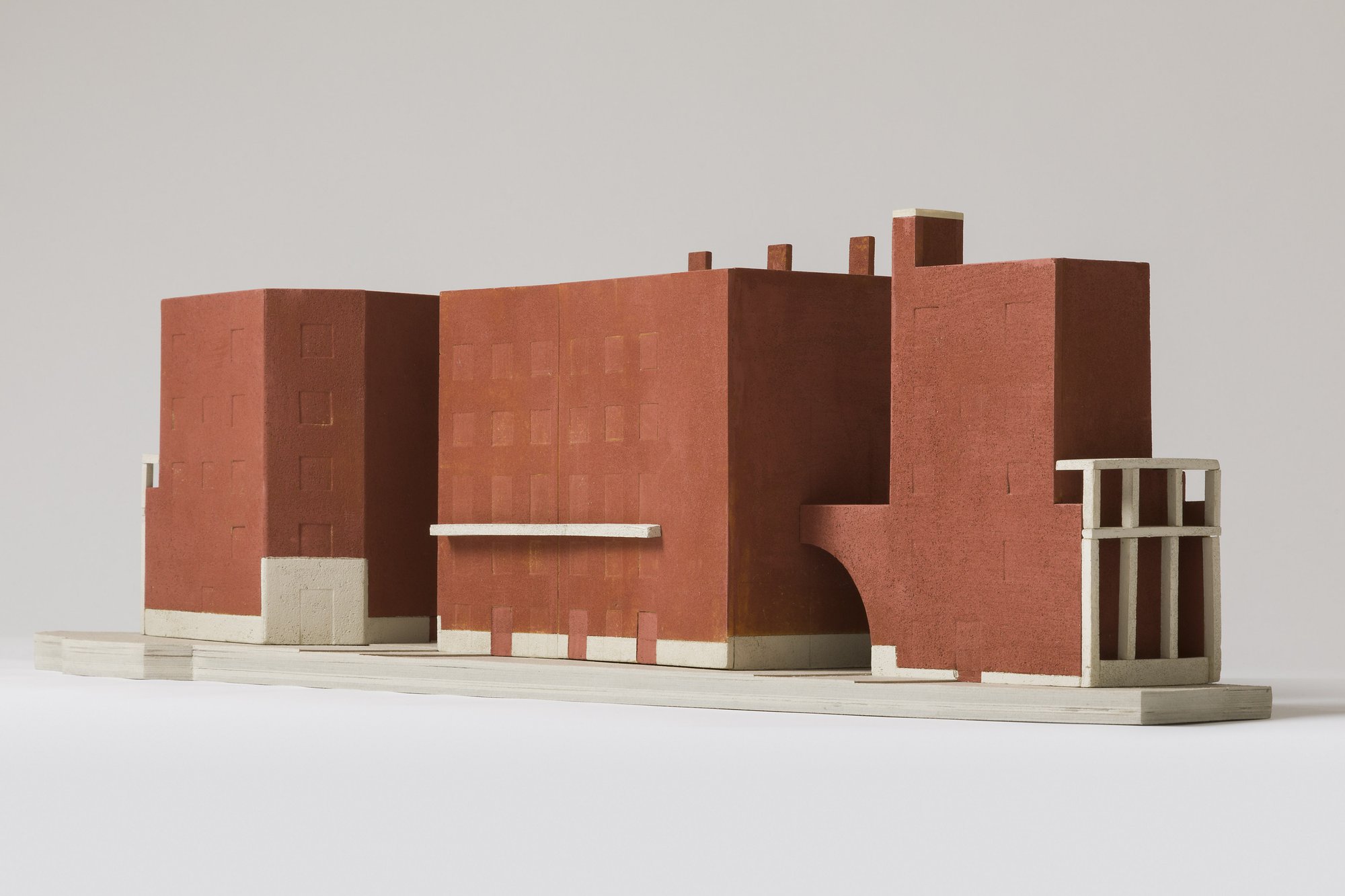
Taylor Court & Chatto Court, model looking west from Well Street – The wild bond brickwork walls bear onto precast plinths, which form a robust weathering base to the buildings and relates to the scale of a person
-
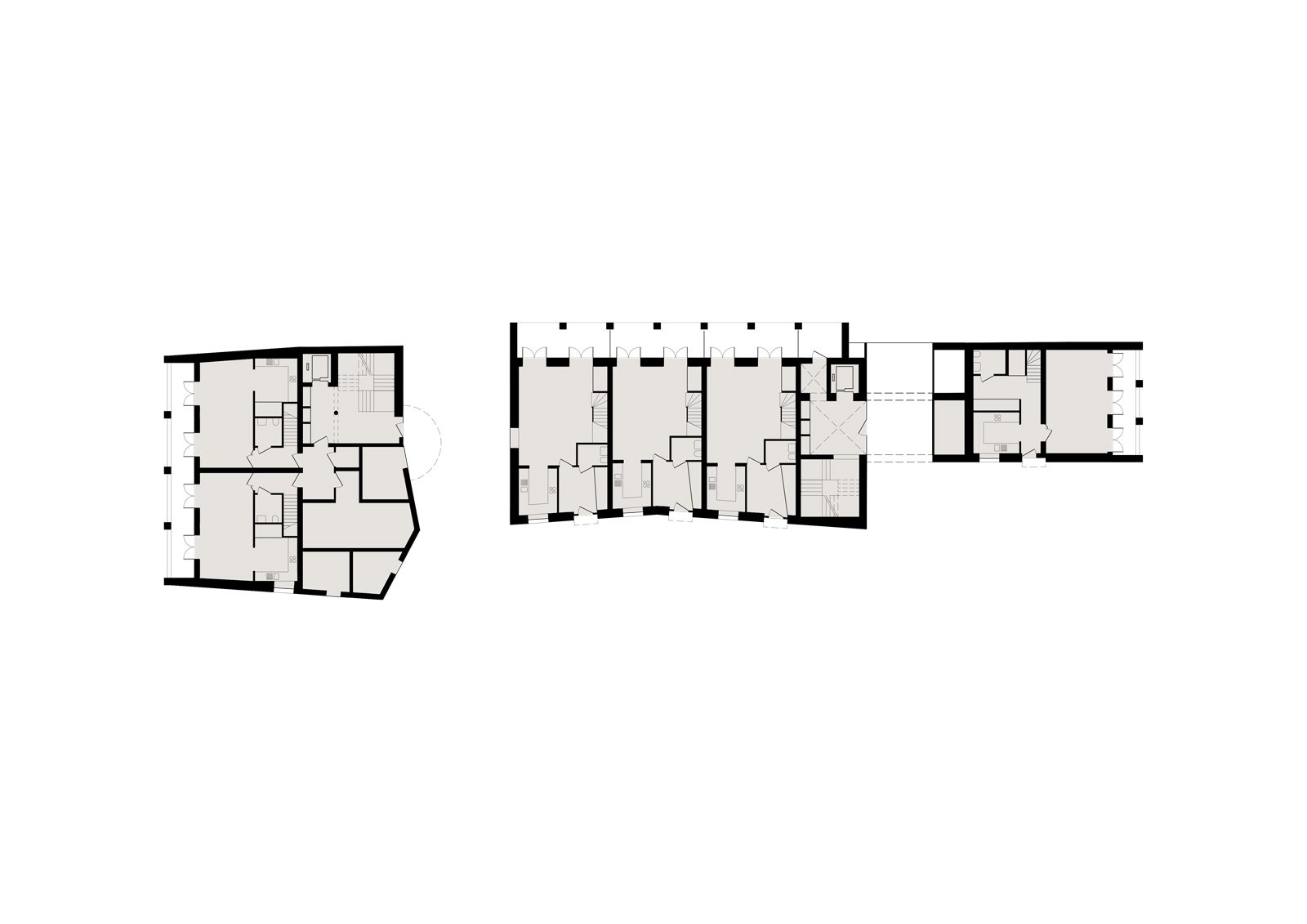
Taylor Court & Chatto Court, ground floor plan – The two buildings provide 20 social rent and shared ownership homes
-
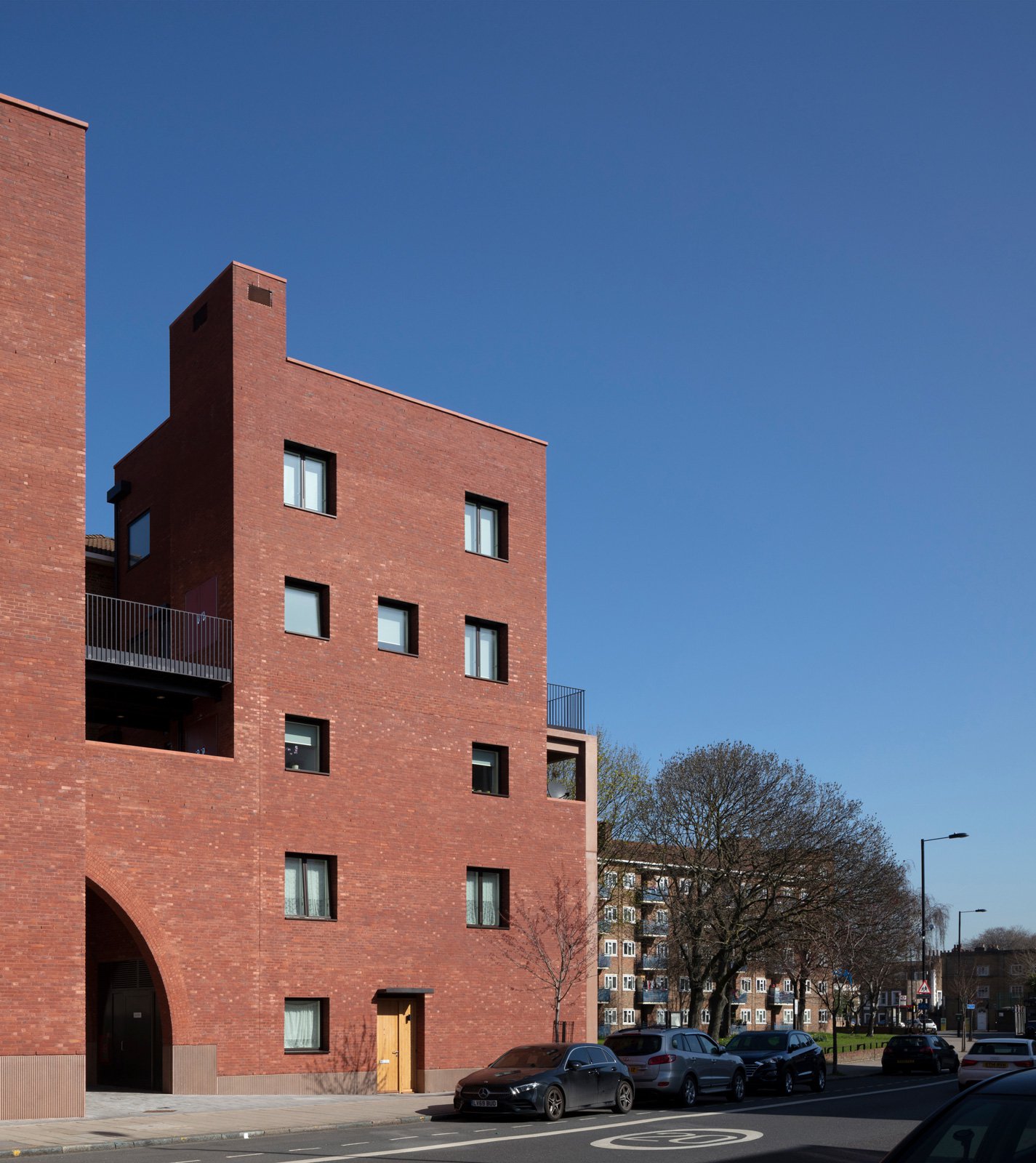
Chatto Court, Well Street – The handmade-brick buildings are separated but the use of a red pigmented flush mortar clearly identifies them as a pair within Hackney and imbues them with a civic quality
-
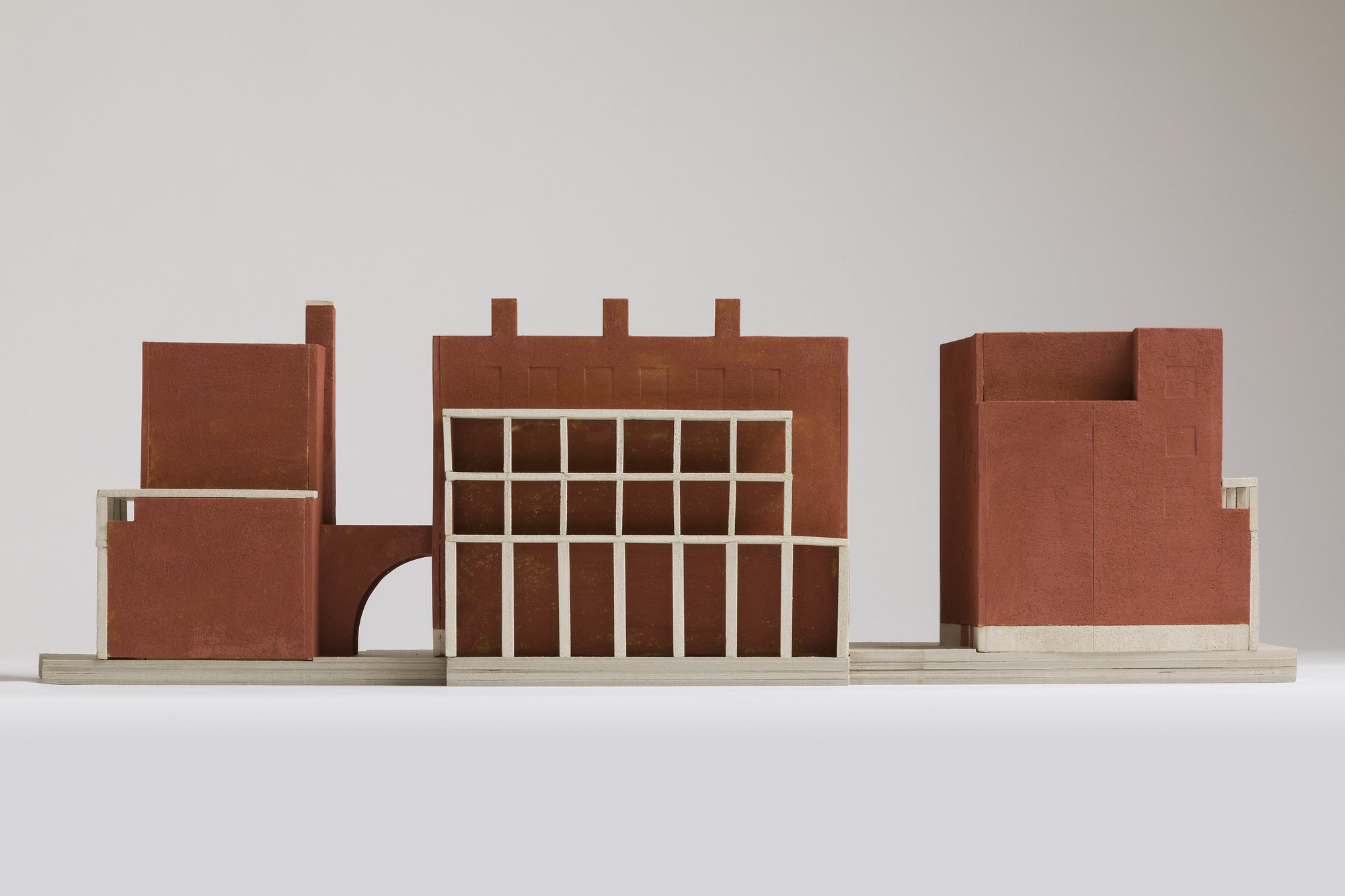
Taylor Court & Chatto Court, model looking north – An important aspect of the design is the bringing together of two architectural traditions: one where the wall is used to contain rooms within monolithic forms; the other where the frame is used to create space
-
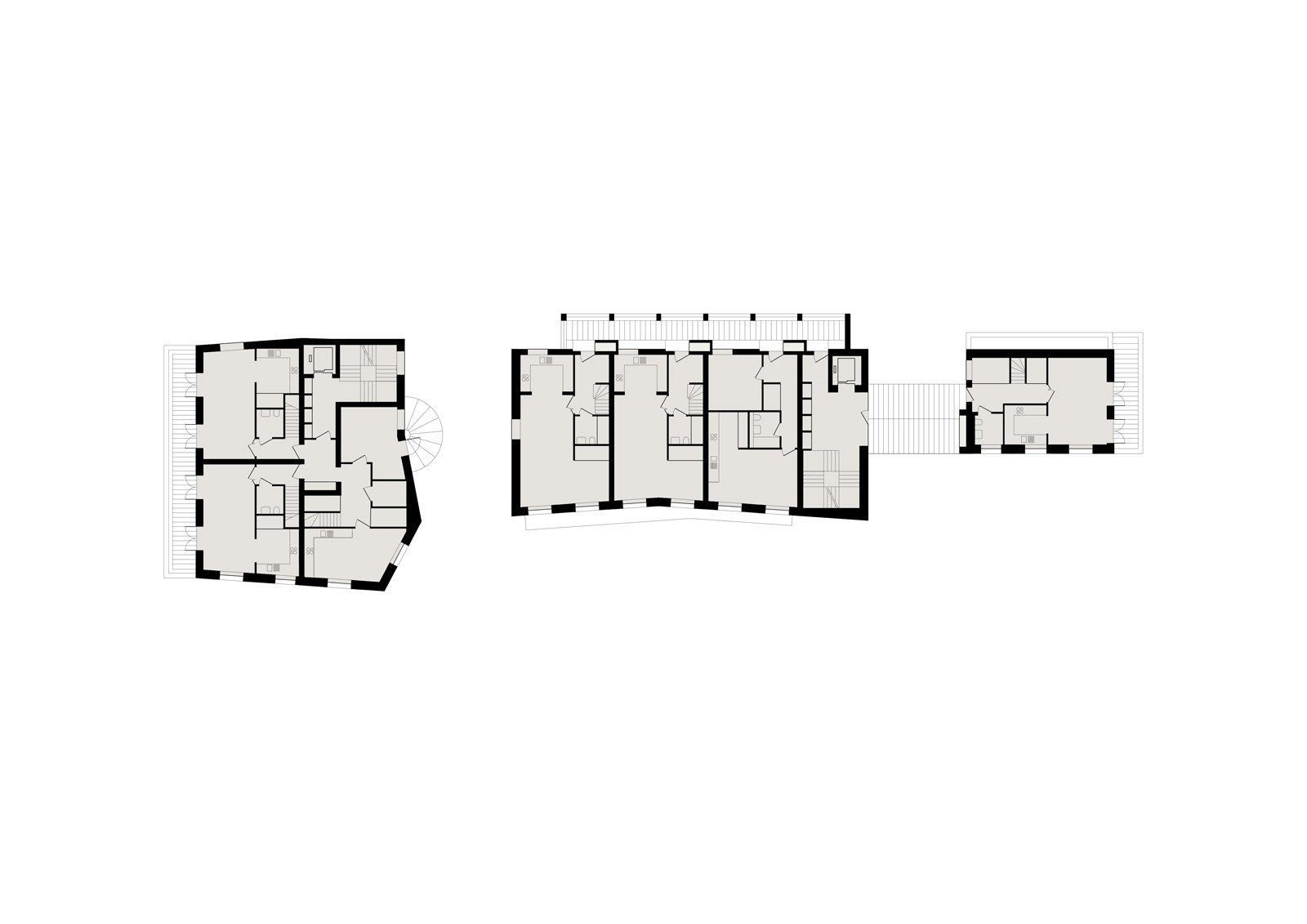
Taylor Court & Chatto Court, third floor plan – The tripartite plan, creating breaks in the building mass, reduces the impact on the microclimate and improves permeability between street and estate
-
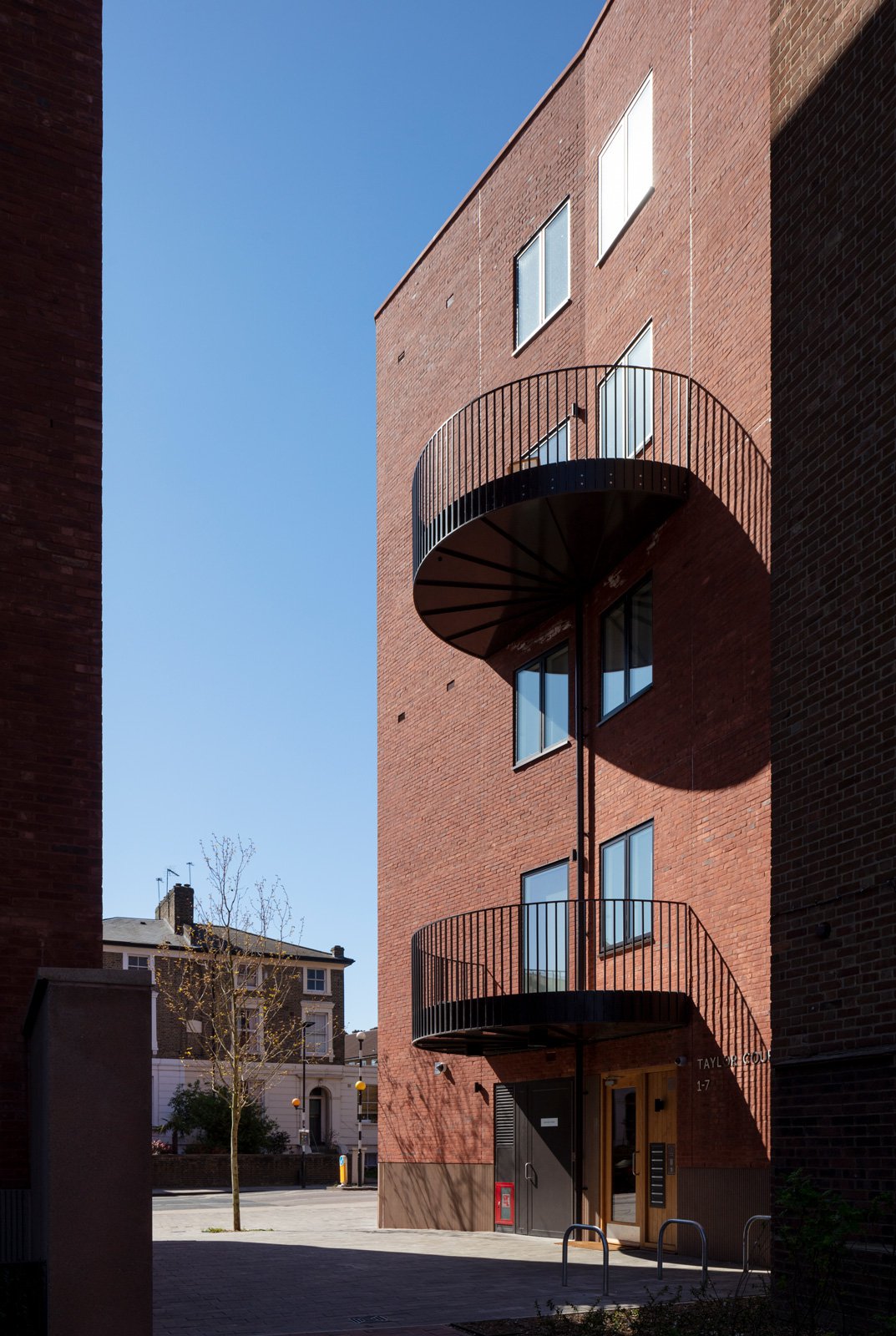
Taylor Court, balcony – The storey above the arch includes a lightweight steel bridge alongside individual cantilevering radial, semi-circular balconies to continue the visual aesthetic of architectural metalworks on the façade
-
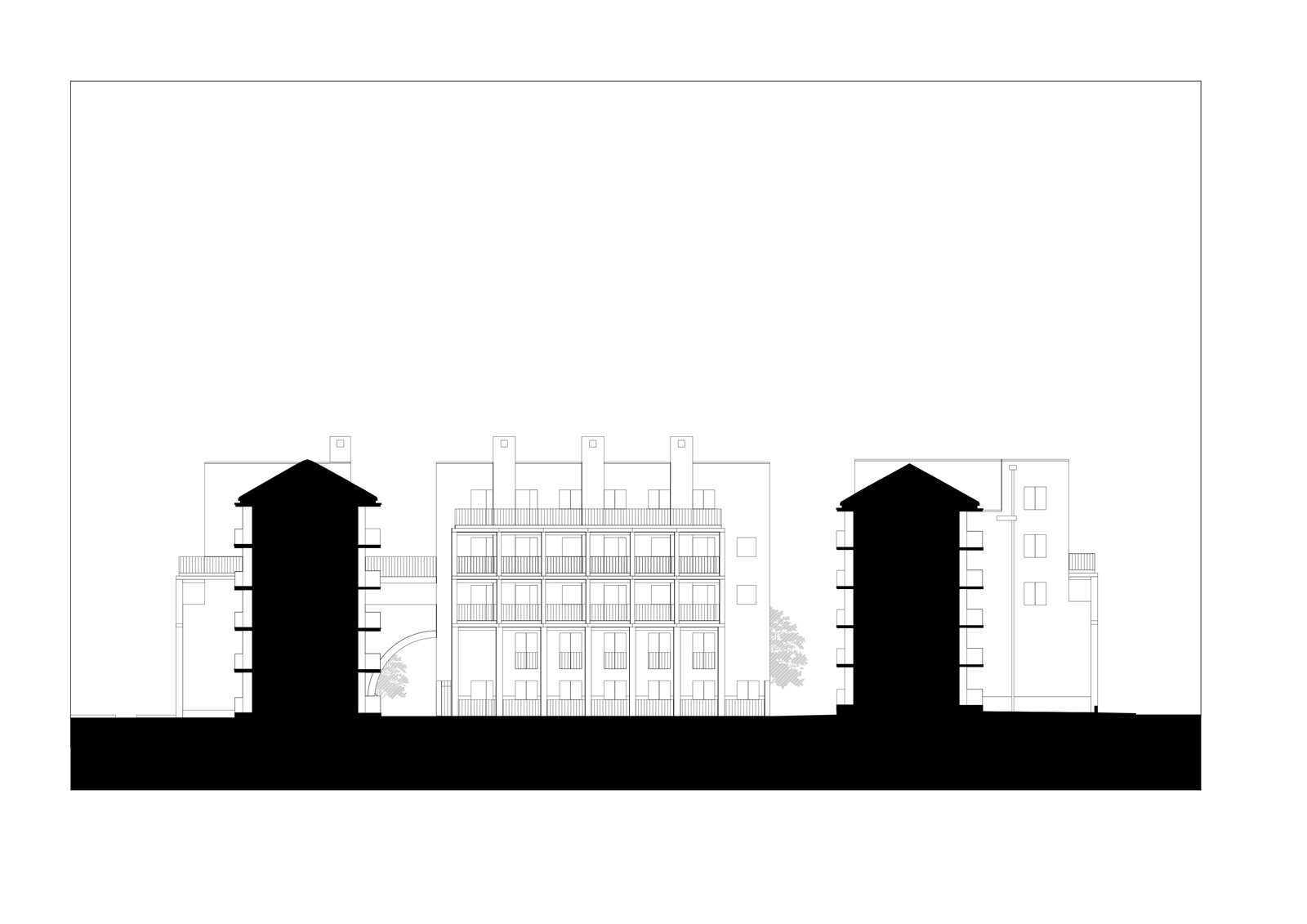
Taylor Court & Chatto Court, north elevation – The wall is an active part in how the architecture responds to its community and is itself a social space. Its liminality heightens residents’ awareness of their environment, the seasons and weather
-

Taylor Court & Chatto Court section
-
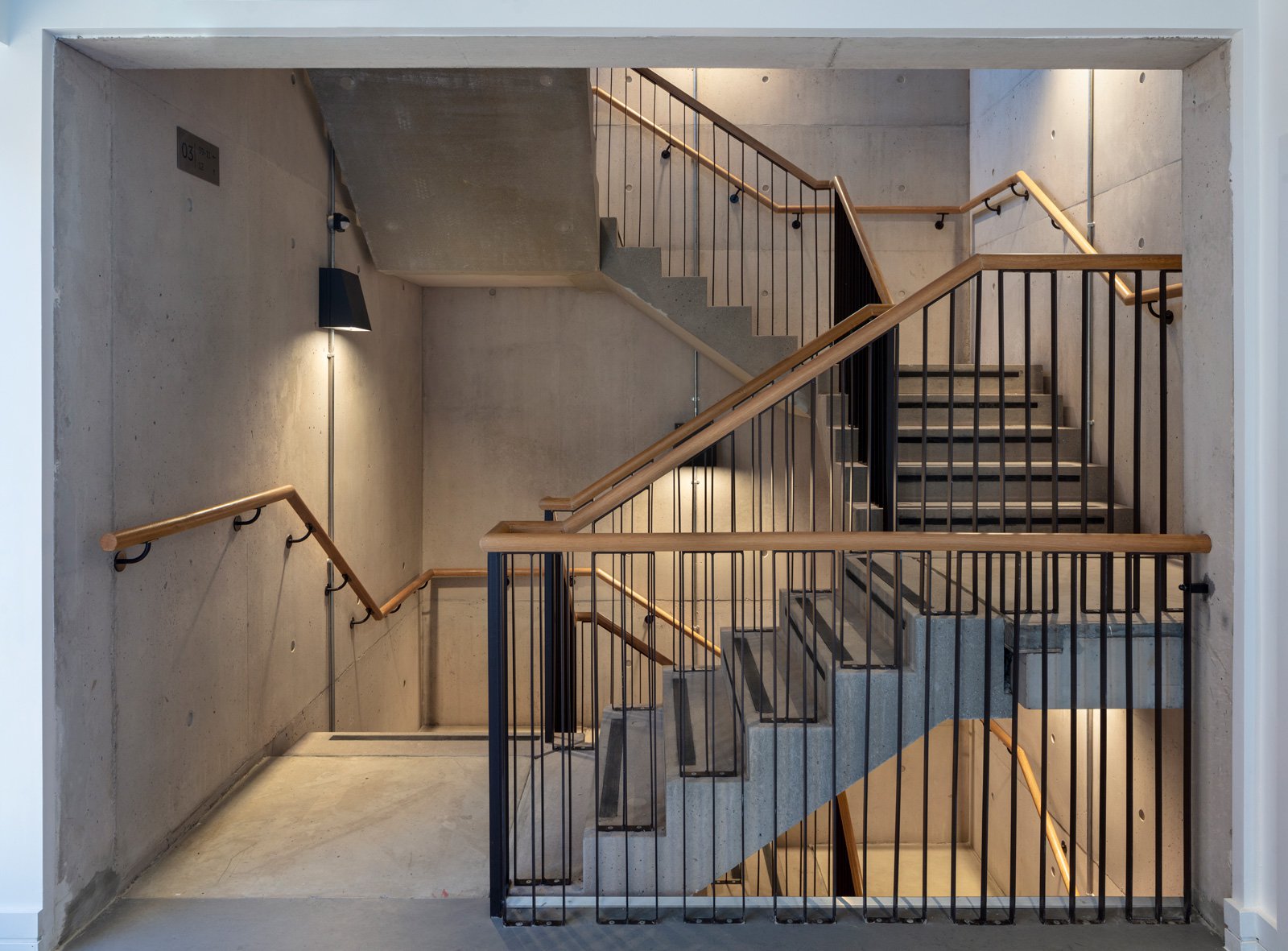
Chatto Court, internal stairs – The journey from street to home choreographed with loggias, courts, generous hallways and conspicuous staircases
-
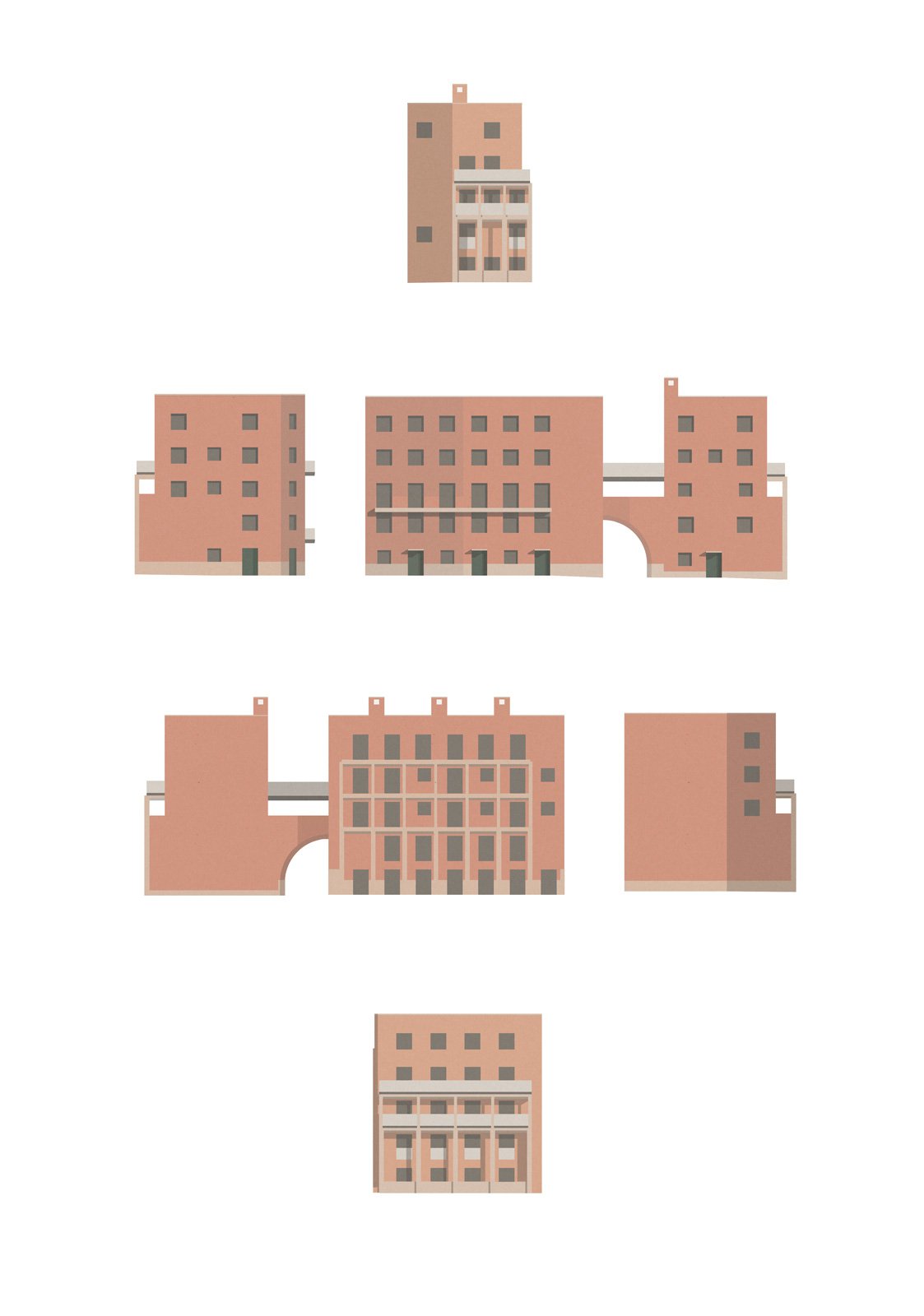
Taylor Court & Chatto Court, elevations – The dignity and wellbeing of residents is key, as is the capacity of a building to orientate inhabitants to the environment, with some 90% of homes being dual or triple aspect
-
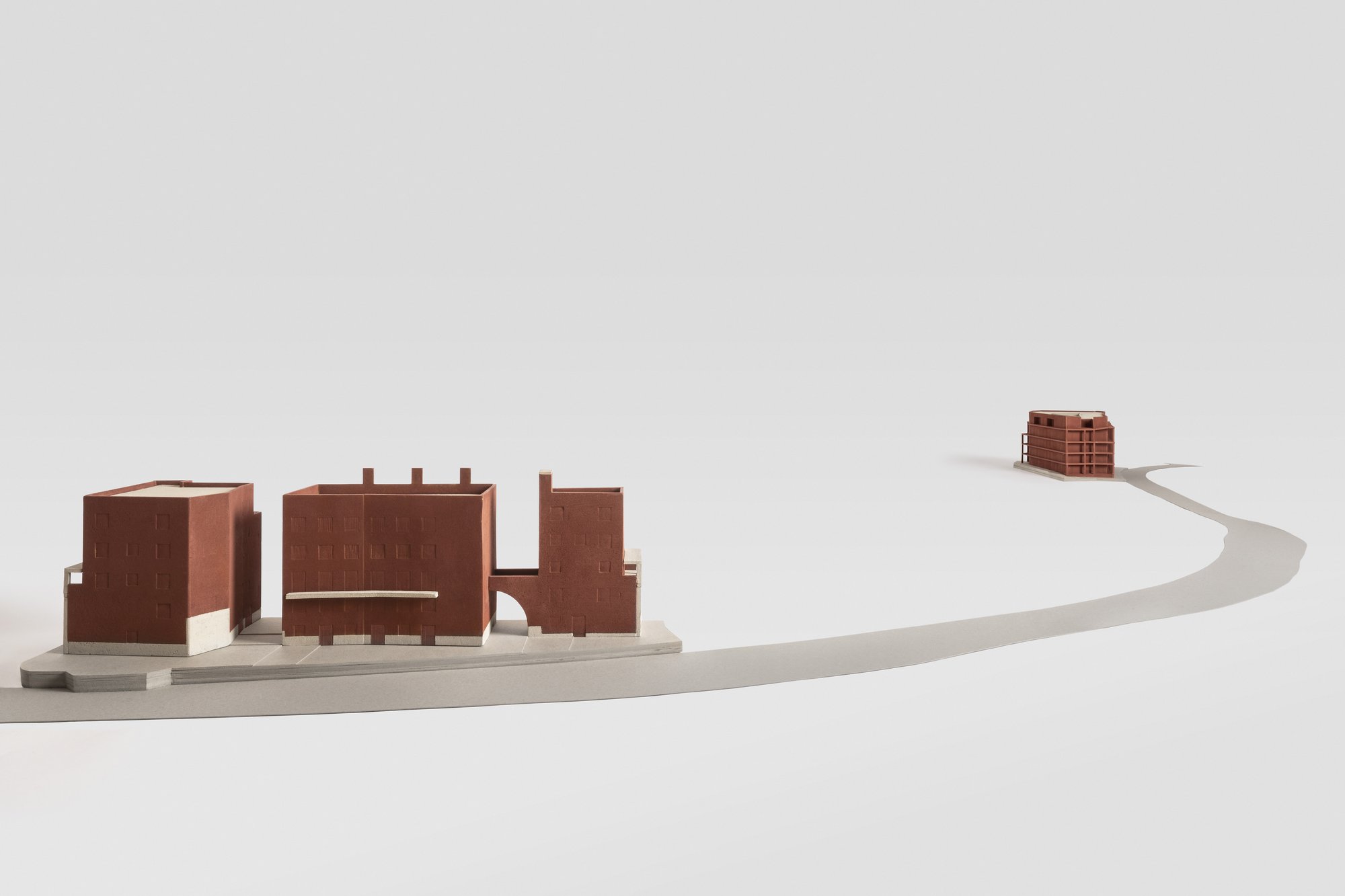
Taylor Court & Chatto Court (foreground) and Wilmott Court (background), model – They are part of Hackney Council’s ambitious programme of new Council housing, which is providing hundreds of new Council homes through an innovative, in-house and not-for-profit approach






















